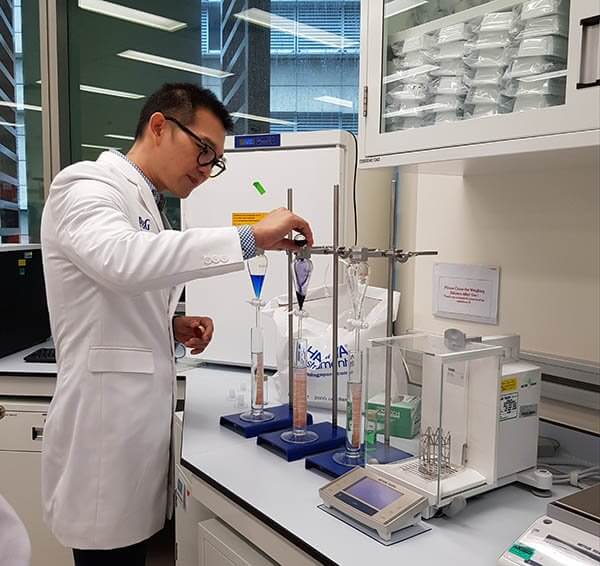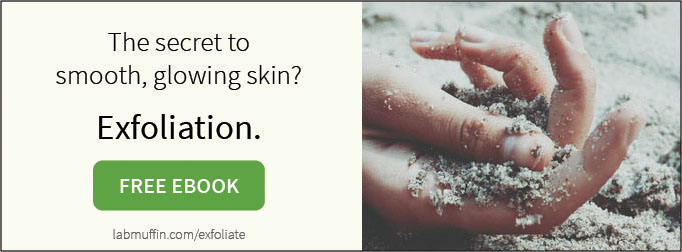This post is sponsored by P&G.
I recently had the incredible opportunity to visit the Procter & Gamble Innovation Centre in Singapore.
P&G have a longstanding dedication to science, so I was very excited to be able to go behind the scenes. And I’ve documented some of the underlying work that goes into making mass market consumer products for you all!
The P&G innovation centre is Singapore’s largest private research facility, covering 6 floors and 32 thousand square metres in Biopolis, an international biomedical research and innovation hub.
The Innovation Centre’s construction reflects P&G’s dedication to sustainability. It’s Silver LEED and Greenmark certified. Impressively, zero waste went to landfill during the construction of the centre. There are solar panels on the roof, cooling louvres to reduce energy consumption, and the centre uses recycled water.
(One of P&G’s 2030 goals is for 100% of their packaging to be recyclable or reusable – they’re currently at 86% globally.)
The Singapore innovation centre focuses on product development for P&G’s beauty brands, including Pantene, Olay, SK-II, Head & Shoulders and Herbal Essences. 500 scientists from over 20 nations work in the centre.
The centre covers end-to-end innovation, which means that they research everything from what consumers want, to how well the finished formulas work, environmental and human safety, and developing advanced packaging for the final products.
Singapore has a very diverse population, which makes it the perfect place for conducting face-to-face consumer insight research. 2000 consumers pass through the consumer research hub each year, and P&G use these interviews to work out what consumers want. There’s even a little model home that they use for conducting consumer interviews.
P&G also have a strong focus on actually quantifying what consumers want, and how well their products meet these needs – for example, how do you measure “radiant skin”?
Unsurprisingly, there’s a VISIA machine in the skin lab to quantify the effects of products – the VISIA was actually developed in partnership with Procter & Gamble. Clinical tests are conducted on 10 000 volunteers a year, and P&G scientists have published lots of studies in peer-reviewed journals.

Some very cool technology has come out of the P&G labs. In some countries (not Australia yet), there are smaller handheld devices at Olay counters that can measure the aspects of customer skin like smoothness, spots and firmness.
The device has a specially shaped shield that removes the influence of lighting and controls the camera angle, and the resulting image is matched to a database and scored against skin of other people of the same age. Skincare products are then recommended based on the results. (The Skin Advisor app is a less precise version of this.)
P&G’s detailed approach to skin carries through to hair. Again, there’s a lot of emphasis on creating the right tools for diagnosing what your hair needs.
Head & Shoulders in Japan has a microscope-based tool that scans the scalp and hair, then determines the best haircare products for you based on the measured characteristics (flakes, oil, hair thickness, moisture etc.).
I also had the opportunity to visit the haircare and skincare development labs. I wasn’t allowed to take many photos since there are some heavily guarded trade secrets in there.
For example, P&G make custom instruments for testing their hair products – there was a machine called the Pendulum that specifically measures hair bounciness. And of course, there was an unimaginable amount of hair samples that scientists were using!
P&G also use lots of different approaches in developing their skincare products. At the Singapore innovation centre, they conduct cell biology and genomics research to try to understand the entire picture of what’s happening within the skin, not just the more straightforward measurements of skin characteristics (although they study that too).

I’ll be talking a bit more about P&G’s latest product innovations – watch out for that post soon!
This post is sponsored by P&G; however, the content is all based on my independent research and my honest experience. For more information, see Disclosure Policy.



















This article is great! Thanks a lot for sharing, it is fascinating to have a sneak peak into their labs 🙂
Looking forward to the follow up article!
P&G also owns Eucerin and Eucerin recently came out with their own patented skin lightening ingredient known as Thiamidol, it is currently available in Eucerin’s Anti-pigment range in the UK.
Any thoughts on Thiamidol? Seems P&G published research on it as well as before and after pictures.
Thank you for this article, Michelle! Can’t wait to read the next “behind the scenes” installment of your visit. I think this is such a good reminder that mass/less expensive products are/can be incredibly innovative/cutting edge. It’s just that it’s difficult to ignore the noise of the heavily marketed/sponsored “cool/trendy” products out there that usually have a premium price tag. Price does NOT always equate quality or innovation! I try to talk about products that I really liked that work for me but are not necessarily the brand that everyone else is talking about on Instagram @Jennifer.refinedbeauty
p.s. I consult in product development and am not paid to promote the brands I post about. My comments are from my own experience. I’d love to hear everyone’s opinion if you have the chance to stop by. Thanks!
Truly fascinating.
Have you ever visited the Hearst Corporation’s Good Housekeeping testing laboratories? They are in New York City.
I’d love to read your insider’s look at their labs, something similar to the testing and innovation intrigue you shared above.
The Hearst set up must be on a much smaller scale though. How inordinately impressive that P&G has 500 scientists at work.
Your work takes you on so many beautiful paths!
Wow! A lot of hair samples for different categories!! Didn’t know Joy dishwashing is also one of their products
Hi Michelle, Im a local here living in Singapore. Sorry about the late comment. Im so proud that you share this post. You are really lucky that you get to visit and explore this facility. Its been a long time dream that one day i can get to work at P&G. Although i have never visited there before. Im working hard to getting my degree in chemistry despite my age. Reading this post motivates me even more to science, technology and innovation.
But hey if you are planning to visit Singapore again, do hit me up. I would love to meet up with you as a well known scientist. Im a long time fan and follower.
I will definitely try to organise a meetup next time I’m travelling! Hopefully that won’t be too far away 🙂
Hi Michelle ,
What an incredible article! Loved reading your insights. Excellent information.